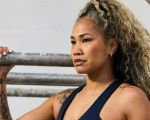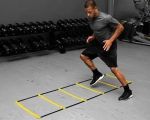How to Set Up a Fitness Routine for Beginners
1. Why I Decided to Start a Fitness Routine
When I first decided to get serious about my fitness, I was overwhelmed with all the information available online. Everywhere I looked, there were countless fitness programs, tips, and routines promising incredible results. But the truth is, when I started, I didn’t know where to begin. I needed something manageable that fit into my busy life—something I could stick with. After a lot of research, I realized that setting up a beginner-friendly fitness routine was the key to success.
Getting started with fitness can feel intimidating, but with the right approach, it becomes manageable and, most importantly, sustainable. The journey doesn’t need to be about perfection; it’s about progress. I found that starting slow, with realistic goals and a structured routine, helped me build a foundation for long-term success. In this article, I’ll walk you through the steps I took to create my fitness routine and offer some tips to help you do the same.
2. Setting Realistic Goals for Your Fitness Routine
When I first began my fitness journey, one of the most important steps was setting realistic, achievable goals. I knew that my long-term goal was to get stronger and healthier, but I also realized that small, incremental goals would keep me motivated along the way. Rather than aiming for perfection, I focused on goals like “work out three times a week” or “increase endurance by running an extra 5 minutes.” These goals were specific, measurable, and achievable, which kept me on track without overwhelming myself.
The key to goal setting is ensuring that they are SMART—Specific, Measurable, Achievable, Relevant, and Time-bound. For instance, instead of saying, “I want to get fit,” I set a goal like “I will walk for 30 minutes, five days a week for the next month.” This goal is measurable, achievable, and specific, which makes it easier to track progress and stay motivated. Start with small goals and gradually increase the difficulty as you build strength and confidence.
3. Choosing the Right Type of Exercise
As a beginner, I found that choosing the right type of exercise was essential to keeping me engaged and motivated. There are countless options available, from cardio exercises like running and cycling to strength training and flexibility exercises like yoga. What worked best for me was combining a mix of activities, which not only kept things exciting but also ensured a balanced approach to fitness.
For a beginner, I recommend starting with a combination of these key exercise categories:
- Cardio: Activities like walking, jogging, or cycling are great for building endurance and burning calories. I started by walking 30 minutes a day and gradually increased my pace and distance.
- Strength Training: Weight lifting or bodyweight exercises like squats, lunges, and push-ups help build muscle and increase metabolism. I focused on basic bodyweight exercises to build strength before adding weights.
- Flexibility: Stretching and activities like yoga or Pilates improve flexibility, prevent injury, and help with recovery. I incorporated stretching into my routine to help my muscles recover and prevent tightness.
One thing that helped me stay consistent was choosing exercises that I actually enjoyed. For instance, I tried running for a while but found it hard to stick with. Instead, I opted for biking, which I found much more enjoyable and sustainable. Don’t be afraid to experiment and try different activities until you find what works for you.
4. Creating a Balanced Weekly Workout Plan
After deciding on the types of exercises I wanted to focus on, the next step was creating a balanced weekly workout plan. A key piece of advice I received early on was to avoid overloading myself by trying to do too much at once. I started with just three workout days per week, with a mix of cardio, strength, and flexibility exercises spread across the week.
For example, here’s what my beginner-friendly workout week looked like:
- Monday: 30 minutes of moderate-intensity cardio (e.g., cycling or brisk walking)
- Wednesday: Full-body strength training (e.g., bodyweight squats, push-ups, lunges)
- Friday: 30 minutes of cardio, followed by 15 minutes of stretching or yoga
This balanced routine allowed me to stay on track without overwhelming myself. As I became more confident, I gradually increased the duration and intensity of my workouts, eventually adding more strength training days or longer cardio sessions. Keep in mind, recovery days are just as important as workout days—your muscles need time to repair and grow stronger. I made sure to take at least one rest day per week.
5. Overcoming Obstacles and Staying Motivated
Staying motivated during the first few months of a fitness routine can be challenging, especially when you don’t see immediate results. I struggled with this at first, as I wanted to see progress right away. However, I soon learned that fitness is a marathon, not a sprint. It took time to build strength, endurance, and flexibility, and that’s perfectly okay.
To stay motivated, I found it helpful to track my progress. I kept a workout journal where I noted the exercises I did, how long I worked out, and how I felt afterward. This not only helped me stay accountable but also showed me how far I’d come. Another tip that worked for me was setting mini-goals. For example, I aimed to increase the number of push-ups I could do each week or improve my time on a 5k walk.
It’s important to celebrate small victories along the way. Whether it’s completing a week of workouts or hitting a personal best, acknowledging your progress helps maintain momentum. I also found it helpful to have a workout buddy or support group, as having someone else to exercise with made it more enjoyable and motivating.
6. The Importance of Rest and Recovery
One of the most important lessons I learned early in my fitness journey was the value of rest and recovery. While it can be tempting to push yourself every day, rest days are essential for preventing burnout and injury. I made sure to incorporate rest and active recovery (like light walking or stretching) into my weekly routine to give my muscles time to repair and grow stronger.
Sleep is also crucial for recovery. When I started paying more attention to getting enough sleep, I noticed a big difference in how I felt during workouts and in my overall energy levels. As a beginner, it’s easy to get excited and overdo it, but it’s important to listen to your body. If you’re feeling fatigued or sore, don’t hesitate to take an extra rest day or modify your workout.
Conclusion: The Key to Long-Term Success
Starting a fitness routine as a beginner can feel daunting, but with the right mindset and approach, it becomes an enjoyable and rewarding experience. By setting realistic goals, choosing exercises you enjoy, creating a balanced workout plan, staying motivated, and prioritizing rest and recovery, you can set yourself up for success in the long term. Remember, fitness is not about perfection—it’s about progress. Every step you take brings you closer to your health and fitness goals.
If you're ready to start your fitness journey or need expert advice and personalized workout plans, visit our website [Fitness] for resources and support to help you stay on track. Start your fitness journey today and experience the benefits of a healthier, stronger you!








